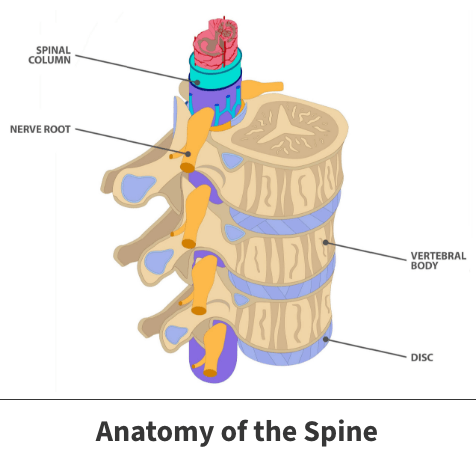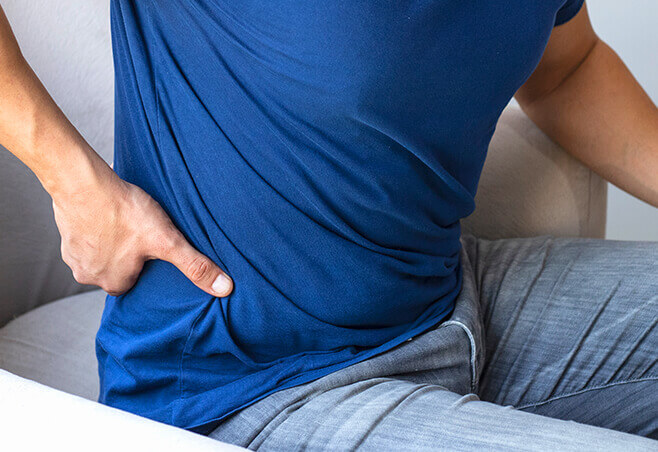Interlaminar implants
The body’s muscles enable individuals to perform just about every notable physical activity. Sometimes, when certain muscles are injured, they can impact other nearby body parts. One such example is the piriformis muscle, which, when not functioning properly, can result in a medical condition called piriformis syndrome.
Anatomy

The piriformis muscle is located in the buttocks region. Specifically, it begins at the spine’s base and attaches to the thighbones. It is located close to a major nerve called the sciatic nerve.
This muscle plays an important role in enabling persons to rotate their hip and move their legs and feet outward.
About
Over time, injury or illness can alter these structures. Medically this is known as compression or impingement. As compression progresses, these spaces become narrower and push against the nerves. The most commonly seen form of narrowing is called spinal stenosis.
Causes
Spinal narrowing can result from any number of causes, including:
- Bone overgrowth
- Stiff or thickened soft tissues like ligaments
- Abnormal growths like cysts or tumors
- Damaged spinal discs
- Overgrowth of back and spinal bones
Interlaminar implants can also fix spinal injuries caused by events like falls and automobile accidents.
Risk factors
Certain factors might increase your risk of developing this problem, including:
- Age – Spinal stenosis most often strikes people aged 50 and older
- Repeated mild trauma
- If you are an athlete routinely competing in full-contact sports like football or wrestling, your risk increases.
- Congenital defects
- Your risk is elevated if you were born with any type of spine defect like scoliosis or muscle or bone illness impacting the development of the spine

Symptoms
When symptoms occur, you may experience noticeable leg discomfort. This pain, which often is cramping, occurs in one or both legs and worsens when you stand or walk for extended periods. It might ease or stop completely when you rest or sit down.
Spinal stenosis can also include other symptoms, such as back pain, leg numbness, and tingling. In more advanced cases, you may also experience weakness or immobility in your foot or leg.
Complications
If not properly diagnosed and effectively treated, spinal narrowing will only progress. Severe cases carry the potential to cause concerns, like severe leg numbness, a progressive weakening of your legs, balance challenges, the inability to voluntarily control urinary or fecal urges, and possibly even paralysis.
Diagnosis
The diagnostic process’s initial stage involves your physician performing a complete physical evaluation and carefully documenting your medical history.
Usually, confirmation of spinal compression requires the use of internal imaging equipment, such as an X-ray, MRI (magnetic resonance imaging) scan, or CT (computerized tomography) scan. These photos enable your doctor to see instances of narrowing and compression and determine their severity.
Interlaminar implants
You might be a candidate to undergo a minimally invasive procedure called interlaminar implant treatment, sometimes referred to as interlaminar spacers.
Treatment
During the procedure, orthopedic surgeons insert these spacing devices between spinal bones and tissues. This shifts the narrowing structures back and holds them in a fixed position.
This technique is favored over more invasive undertakings like laminectomy or fusion surgeries. Surgeons make deep incisions into your lower back during these operations to remove damaged laminae, soft tissues, and other deteriorating structures. This is done to relieve the pressure on the spine and surrounding nerves.
In spinal fusion, surgeons repair injured laminae and surgically fuse the components together.
Recovery
The speed at which you recover depends on several factors, such as your age, general health, and the severity of the narrowing. Most uncomplicated cases respond favorably, and some people may be able to return to previous activities in as little as a few weeks after the procedure. You may also need a course of physical therapy to regain lower back strength and any lost mobility.
It is important to realize you might not be an optimal candidate for this procedure. Weigh the pros and cons with your doctor before undergoing the technique.
Videos
Related specialties
- Anterior Cervical Corpectomy & Discectomy
- Artificial Disc Replacement (ADR)
- Bone Cement Injection
- Degenerative Disc Disease
- Diffuse Idiopathic Skeletal Hyperostosis (DISH)
- Discectomy
- Discitis Treatment & Information
- Epidural Injections for Spinal Pain
- Foraminotomy
- Interlaminar Lumbar Instrumental Fusion: ILIF
- Kyphoplasty (Balloon Vertebroplasty)
- Kyphosis
- Laminectomy: Decompression Surgery
- Lumbar Epidural Steroid Injection
- Lumbar Interbody Fusion (IBF)
- Minimally Invasive Spine Surgery
- Outpatient Spine Surgery
- Pinched Nerve
- Piriformis Syndrome
- Sacroiliac Joint Pain
- Sciatica
- Scoliosis
- Spinal Fusion
- Spondylolisthesis & Spondylolysis
- Vertebroplasty
- Whiplash & Whiplash Associated Disorder (WAD)
